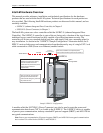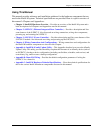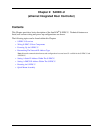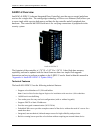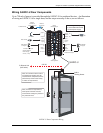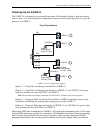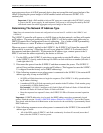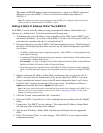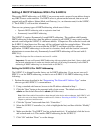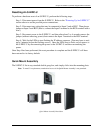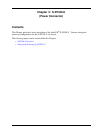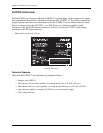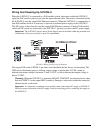
Chapter 2: S-EIDC-U (ethernet Integrated Door Controller)
16
Intelli-M Hardware Installation And Reference Guide
aggregate power draw of all PoE powered devices does not exceed the total power budget of the
switch. Exceeding the power budget of a PoE enabled switch will cause an S-EIDC-U to
randomly fail.
Important: If both a PoE enabled switch and DC power are connected to the S-PCON-U, priority
is given to the DC power supply. In such instances, PoE power is still being allocated by the PoE
switch and counts toward the aggregate total power budget of the switch.
Determining The Network IP Address Type
Note: Network communication formats and configurations have not been UL verified for the S-EIDC-U and
S-PCON-U.
The S-EIDC-U controller will appear as a full IP client on the data network, and thus will require
an IP address. The network connection for the S-EIDC-U will be for either static addressing or
DHCP (Dynamic Host Configuration Protocol) addressing. Use of either a DHCP permanently
leased IP address or a static IP address is required by the S-EIDC-U.
Whenever power is initially applied to the S-EIDC-U, the S-EIDC-U will signal the current IP
address that it is receiving. (Signaling also will occur when the S-EIDC-U is rebooted, that is,
disconnected and then connected.) To determine the IP address type, connect power to the S-
EIDC-U and note the address reported by the device as follows:
1. Use the LEDs on the S-EIDC-U unit when you are ready to note the IP address. If you look
at the S-EIDC-U closely, each of the top five LEDs on each side have a number (left side 1-
5 and right side 6-0).
2. Disconnect the power from the S-EIDC-U and then reconnect the power. The S-EIDC-U
unit will boot and then attempt to acquire an IP address. (This happens because the S-EIDC-
U is shipped from the factory set for DHCP addressing).
3. If the following sequence occurs when power is connected to the S-EIDC-U, the network IP
address type may or may not be DHCP:
• All LEDs will flash three times to begin the sequence. (The S-EIDC-U is fully operational dur-
ing IP address flashing.)
• A numbered (LED) will flash representing each number in the IP address. Each number group
is separated by all LEDs flashing once.
For example: 145.198.1.1 interprets as #1 flash #4 flash #5 flash <all flash> #1 flash #9 flash
#8 flash <all flash> #1 flash <all flash> #1 flash <all flash>.
• Once the sequence has repeated 3 times, the S-EIDC-U LEDs will return to normal operation
mode.
Important: If DHCP addressing is to be used, the DHCP address must be a permanently leased
address. Read the section “Setting A DHCP IP Address Within The S-EIDC-U” later in this Chapter.
Then check with the Network Administrator at the location for the availability of permanently leased
DHCP addresses.
4. If the following sequence occurs when power is connected to the S-EIDC-U, the network IP
address type is static:
• All of the LEDs on the S-EIDC-U unit flash continuously for about 10 seconds (more than 3
times) after the S-EIDC-U receives power.



